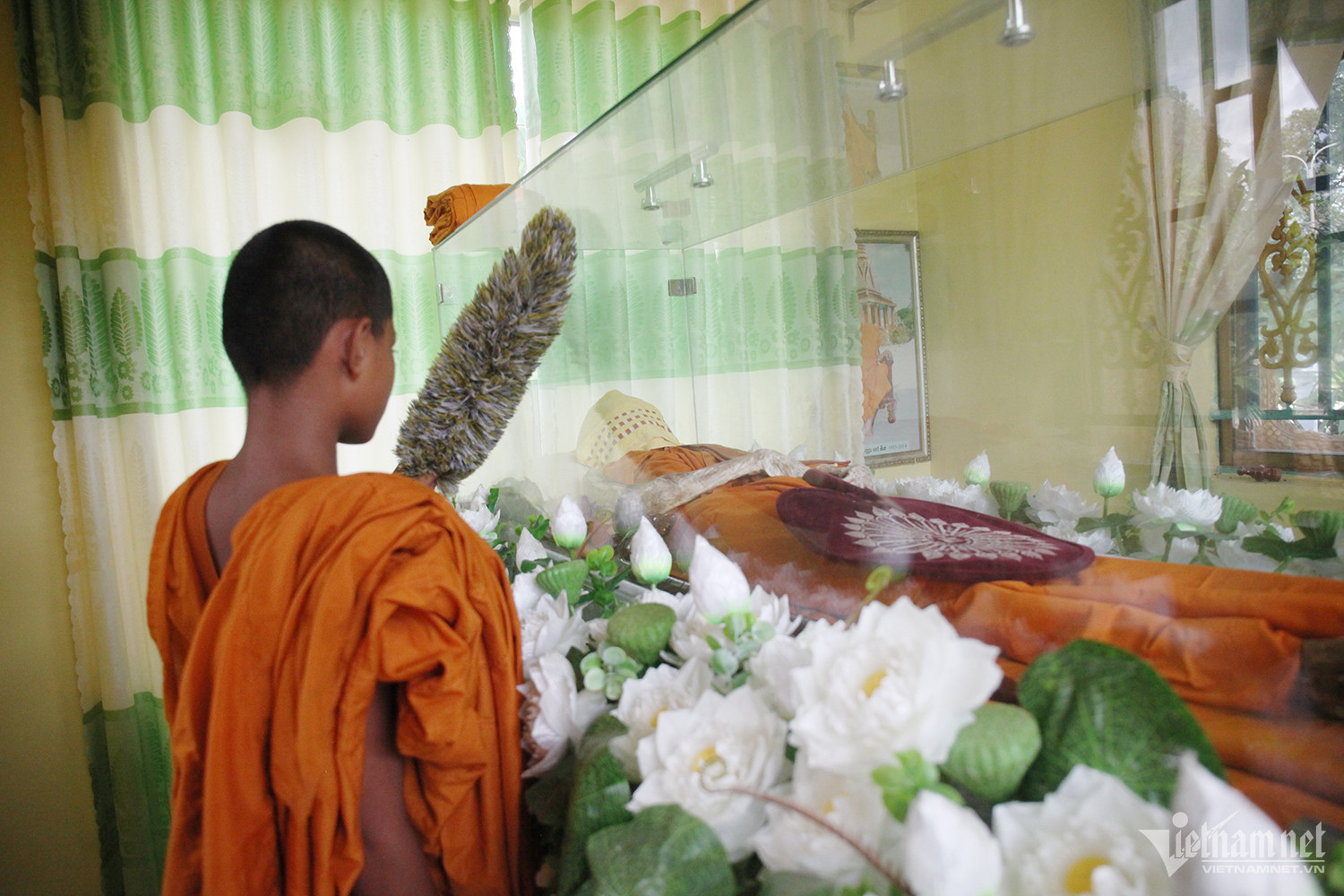
Located next to O Lam commune People's Committee in Tri Ton district in An Giang province, Kom Ph'luu Temple looks majestic with a pagoda gate, fence, main hall, Sala house (a special place to receive guests, and organize offerings and traditional ceremonies), tower for keeping ashes, and some support items.
The most outstanding feature is that the main hall was built in a central position with the ground higher than that of other construction works.
The temple is famous for its beauty as well as Monk Chau Tinh (1935-2014) whose body has not decomposed over 10 years.
Monk Chau Nen, the head of the temple, said Monk Chau Tinh had led a religious life at a pagoda in Tri Ton district. When he turned 13, he moved to Kom Ph’lung Temple until he passed away and was buried on the grounds of the temple.
In March 2020, according to religious custom, Master Chau Tinh's body was disinterred for reburial six years after death. “The day the remains were removed, monks and people gathered in large numbers. When we lifted the coffin lid, we realized that the dead body had not disintegrated, the skin and bones were still intact, and there was no bad smell," Monk Chau Nen recalled
According to Monk Chau Nen, after many years of burial dead bodies will decompose, but Monk Chau Tinh's body is still as intact as it was at the time of burial. No chemicals or embalming methods were used when enshrouding.
Because of this strange phenomenon, the temple’s heads decided to rebuild the stupa and encase the corpse in glass.
On the first days after the decision to keep the monk’s dead body, people flocked to the temple to satisfy their curiosity.
Chau Xuan Han, an official of O Lam commune, confirmed the information about Monk Chau Tinh. According to Khmer customs, burying dead bodies under the earth is not a must, so the local authorities did not interfere with the decision of the temple.
Tran Tuyen